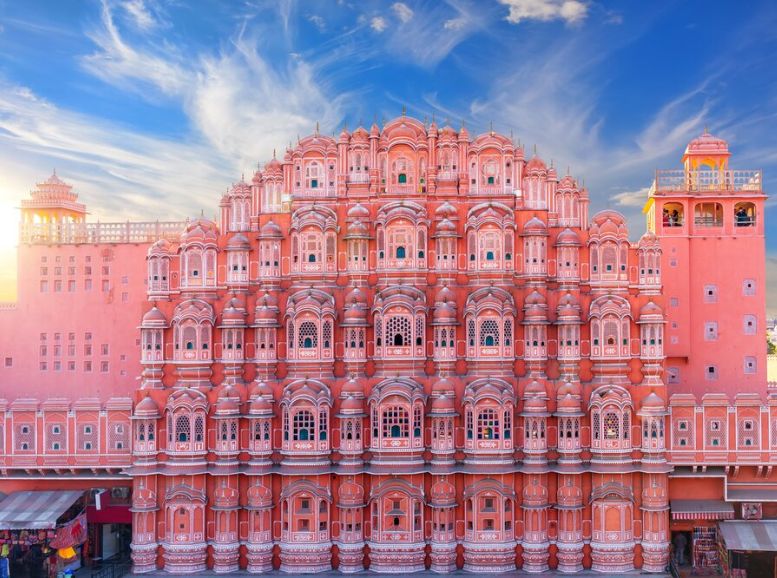Jaipur, India’s Pink City, cradles a mesmerizing architectural gem – Hawa Mahal, the “Palace of Winds.” This captivating structure, with its facade adorned with a multitude of intricate lattice windows and ornate balconies, stands as a testament to Jaipur’s rich cultural heritage and architectural brilliance.
Built in 1799 by Maharaja Sawai Pratap Singh, Hawa Mahal served a unique purpose. The design, with its many windows, allowed cool breezes to flow through the palace, providing a natural air conditioning system in the hot Indian climate. More importantly, the intricate latticework offered royal women a glimpse of the bustling city life and festivities below while maintaining their privacy.
How to reach:
- Soar Through the Skies: Jaipur International Airport, 13 kilometers away, is your gateway. Hire a taxi or pre-paid cab for a 30-40 minute ride, depending on traffic.
- Travel by Train: Disembark at Jaipur Junction Railway Station, well-connected to major Indian cities. Taxis, auto-rickshaws, or local buses can whisk you to Hawa Mahal, just 4 kilometers away, in 15-20 minutes.
- Hit the Road: Jaipur’s network of highways makes it easily accessible by car, taxi, auto-rickshaw, or local bus. Hawa Mahal’s central location ensures easy access from major landmarks.
- Explore on Foot: Staying near the Pink City or central areas? Embrace a delightful stroll! Navigate the charming lanes and vibrant markets of the Old City to reach Hawa Mahal.
- Guided Tours: Explore Hawa Mahal with ease and gain valuable insights. Many tour operators offer guided tours that include the Palace of Winds alongside other city highlights.
- Budget-Friendly Options: Jaipur’s well-established public transport system offers affordable choices. Take a local bus or auto-rickshaw from various parts of the city for a cost-effective commute.
Best time to visit:
Pleasant Exploration (October – March):
Embrace Hawa Mahal during winter, October to March. Jaipur boasts delightful weather, with temperatures between 10°C and 25°C. This cool, dry climate makes it perfect for exploring outdoor gems like Hawa Mahal without sweltering under the summer sun.
Peak Season Magic (November – February):
Prepare for crowds! November to February is peak tourist season, including Hawa Mahal. The weather is mild and comfortable, ideal for sightseeing, but expect more visitors and potentially higher prices for hotels and tours.
Spring Considerations (March – May):
Spring unfolds in March to May, with temperatures gradually rising. While March offers pleasant weather, April and May can be hot, exceeding 40°C. If you visit during this time, explore Hawa Mahal early mornings or late afternoons to avoid the peak heat.
Monsoon Musings (June – September):
June to September brings the monsoon season, offering respite from the summer heat but also significant rainfall. While the landscape surrounding Hawa Mahal flourishes, heavy rain might disrupt your visit to the monument. However, if you don’t mind occasional showers, you can experience Hawa Mahal in a unique monsoon setting.
Post-Monsoon Tranquility (September – November):
September to November welcomes the post-monsoon season, offering pleasant weather and fewer crowds compared to peak tourist times. This period provides a balance between comfortable temperatures and budget-friendly travel, making it an ideal time to visit Hawa Mahal and immerse yourself in Jaipur’s cultural heritage.
Must see things:
Unique Architecture:
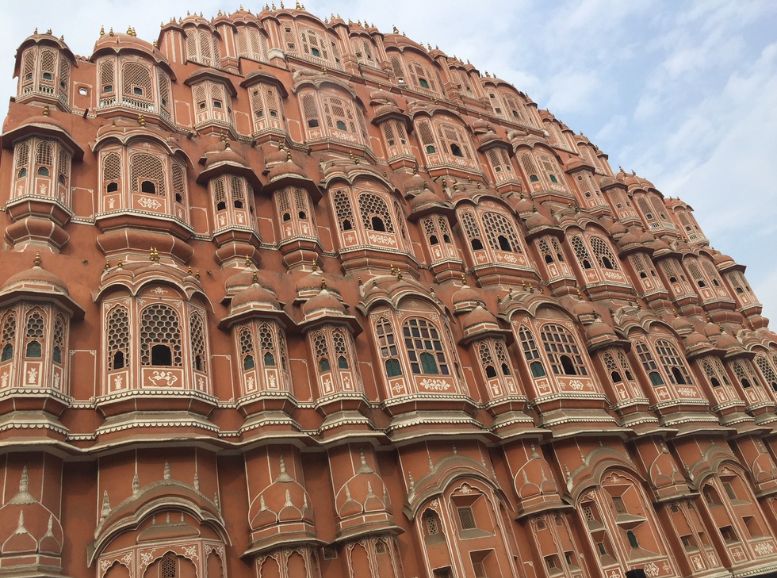
This Mahal stuns with its captivating architecture. The most striking feature is its facade, crafted from pink sandstone and adorned with a mesmerizing array of intricate lattice windows, known as jharokhas. These jharokhas are flanked by ornate balconies, creating a visually stunning five-story structure resembling a honeycomb. But beyond its beauty, this design served a clever purpose. The jharokhas allowed cool breezes to flow through the palace, providing a natural air conditioning system in the hot Indian climate.
Jharokhas:
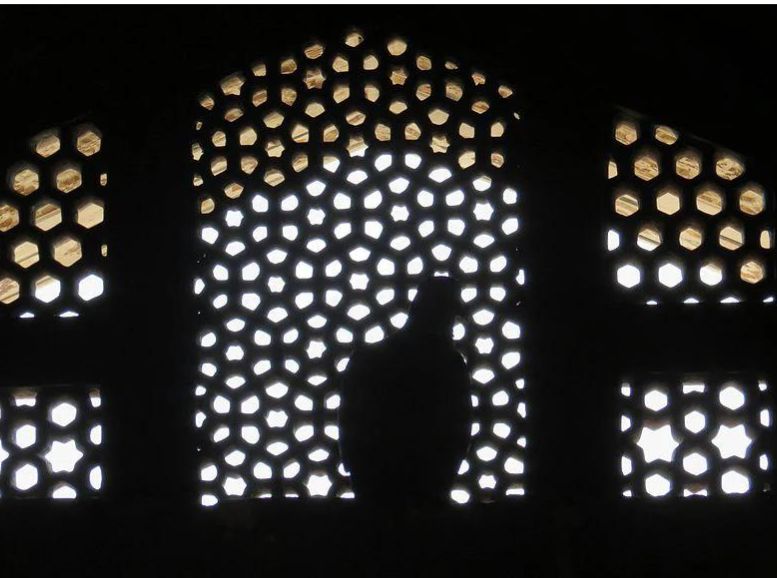
Mahal’s defining characteristic isn’t just its beauty, but its functionality. The palace boasts over 900 intricately carved jharokhas, or windows. These latticework windows aren’t merely decorative; they allowed the royal women within to observe the lively street scene below – festivals, processions, and daily life – while remaining unseen themselves. This clever design offered a glimpse into the world outside the palace walls, maintaining privacy for the royal residents.
Rooftop Views:
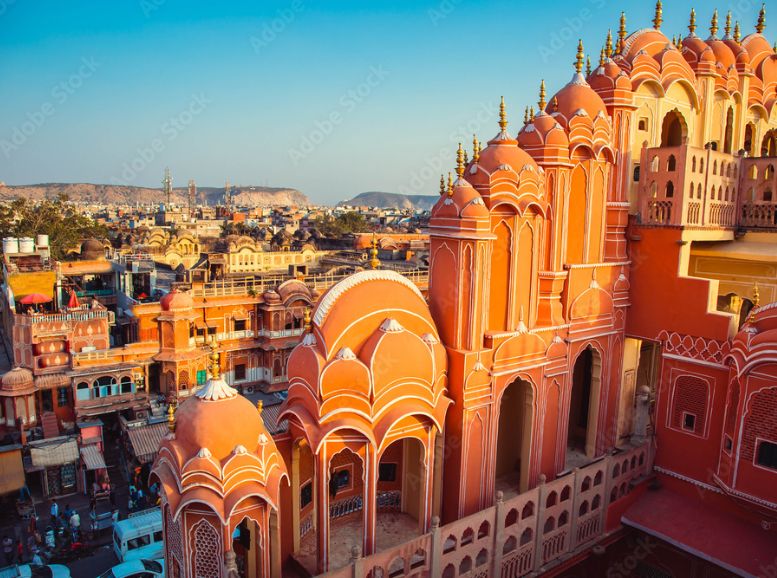
Not all historic sites offer breathtaking vistas, but Hawa Mahal does! Visitors can climb to its upper floors and be rewarded with panoramic views of Jaipur’s bustling streets and markets. The cityscape unfolds before you, a tapestry of vibrant colors and architectural wonders. This rooftop vantage point becomes the perfect spot to capture stunning photographs and truly witness the lifeblood of the Pink City pulsing below.
Hawa Mahal Museum:
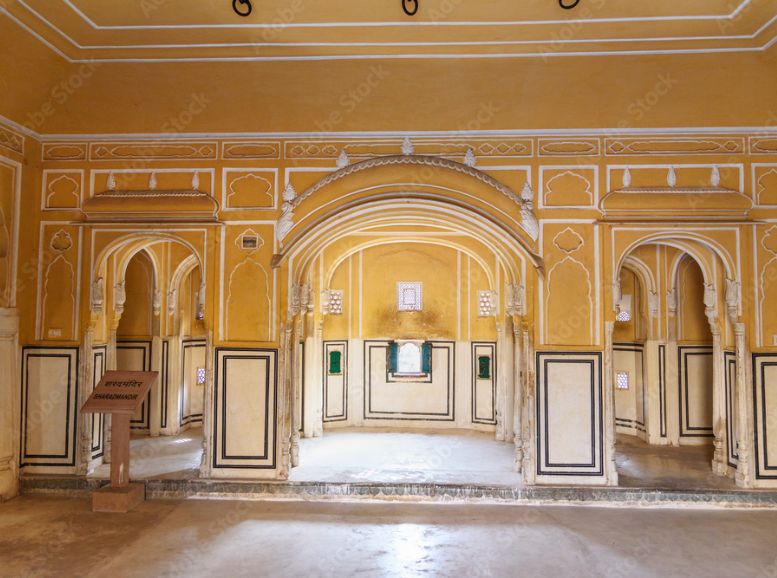
Mahal offers more than just stunning architecture. Tucked within its walls is a museum brimming with treasures. Here, you’ll find a collection of artifacts, paintings, sculptures, and historical relics whispering tales of Rajasthan’s royal heritage. These exhibits offer a glimpse into the lives, traditions, and cultural significance of the Rajput dynasty that once ruled Jaipur, enriching your understanding of this magnificent monument.
Light and Sound Show:
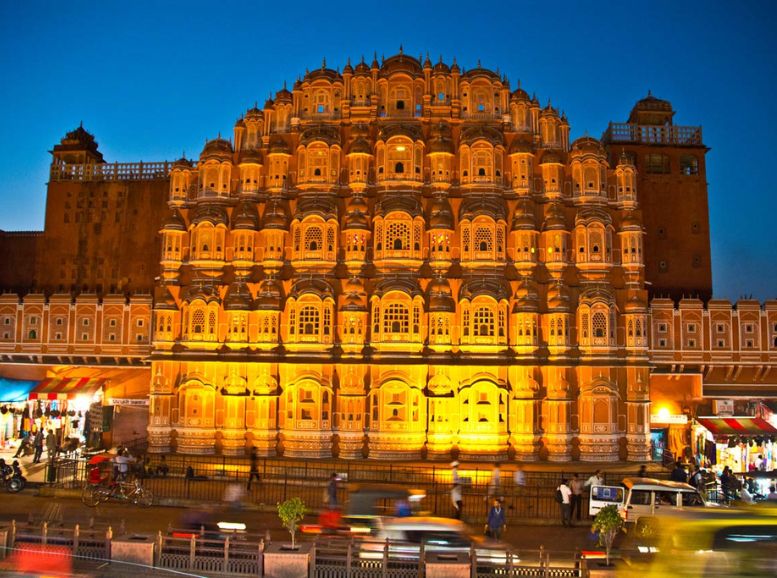
As dusk descends, Hawa Mahal transforms. A captivating light and sound show bathes the palace in a magical glow. The multimedia presentation weaves a spellbinding narrative, bringing the history and legends of Hawa Mahal and Jaipur to life. Watch as colorful visuals dance across the facade, synchronized with captivating music and narration. This immersive experience is a journey through Rajasthan’s rich past, leaving a lasting impression long after the final flicker of light fades.
Cultural Performances:
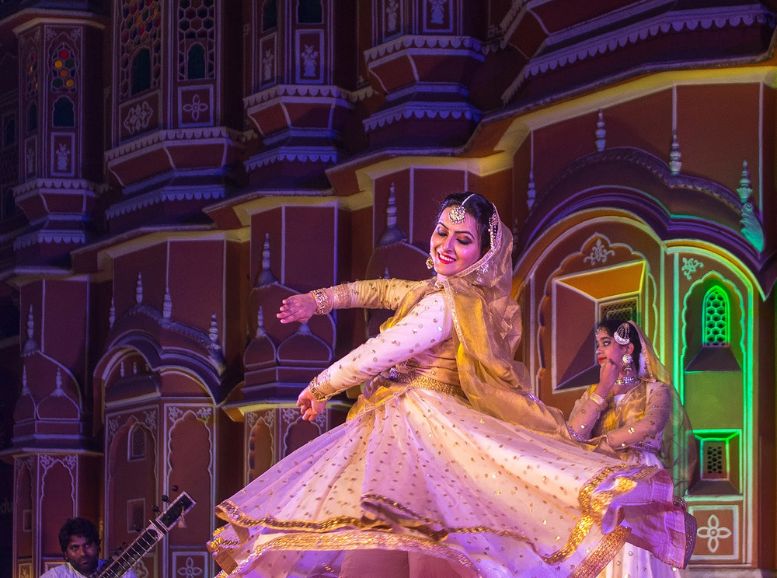
Mahal’s magic extends beyond its stunning architecture. Occasionally, the palace transforms into a vibrant stage for cultural performances. Witness captivating displays of Rajasthan’s rich heritage through traditional Rajasthani dance and music shows. Local artists bring folk dances like Ghoomar and Kalbelia to life, adorned in colorful costumes and accompanied by melodious music. These performances offer a window into the heart of Rajasthan’s soul, creating a truly unforgettable experience.
Local experiences:
1. Heritage Walks:
Delve into Jaipur’s vibrant past with a guided heritage walk. Explore narrow lanes, bustling markets, and architectural gems in the Old City. Discover hidden havelis, traditional crafts, and local life!
2. Culinary Delights:
Tantalize your taste buds with authentic Rajasthani cuisine. Savor local eateries near Hawa Mahal offering iconic dishes like dal bati churma, ker sangri, and delectable sweets.
3. Puppetry Magic:
Immerse yourself in folklore with a traditional puppet show. Witness colorful performances depicting myths and legends, accompanied by lively music and narration.
4. Block Printing Workshops:
Unleash your creativity! Learn the art of block printing from local artisans. Discover the process of creating vibrant patterns on textiles and craft your own souvenirs.
5. Camel Cart Adventures:
Experience the charm of Rajasthan’s countryside with a unique camel cart ride. Traverse scenic landscapes, villages, and fields, offering a glimpse into rural life.
6. Haveli Explorations:
Explore opulent havelis near Hawa Mahal. Guided tours unveil exquisite architecture, intricate carvings, and the stories of these historic mansions.
7. Live Music & Dance:
Witness captivating performances of Rajasthani music and dance. Folk dances like Ghoomar and Kalbelia, accompanied by soulful music, create an immersive cultural experience.
8. Shopping Spree:
Indulge in retail therapy! Explore bustling markets near Hawa Mahal, overflowing with traditional handicrafts, textiles, jewelry, and souvenirs. Haggle for colorful fabrics, intricate embroidery, and unique crafts!
Travel tips:
1. Embrace the Early Bird Bonus:
Beat the crowds and experience Hawa Mahal’s serenity by arriving early after opening hours. This allows for a peaceful exploration, capturing stunning photos without the tourist bustle.
2. Comfort is Key:
Hawa Mahal involves navigating stairs and uneven surfaces. Comfortable footwear like sturdy shoes or sandals with good grip are essential for a smooth exploration.
3. Dress with Respect:
As a historic monument, Hawa Mahal deserves respectful attire. Opt for modest clothing that covers shoulders, chest, and knees when visiting the palace.
4. Stay Hydrated:
Rajasthan’s heat, especially during summers, can be unforgiving. Carry a reusable water bottle and stay hydrated throughout your visit to avoid dehydration.
5. Shield Yourself from the Sun:
Sun protection is crucial. Pack sunscreen, a wide-brimmed hat, sunglasses, and lightweight, breathable clothing to combat sunburn and heat exhaustion.
6. Cash on Hand:
While card payments might be accepted by some vendors, carrying cash ensures smooth transactions, especially in smaller shops and markets near Hawa Mahal. ATMs are available nearby, but cash eliminates potential hassles.
7. Enhance Your Experience with a Guide:
Consider hiring a knowledgeable guide to unlock a deeper understanding of Hawa Mahal. Guides provide valuable insights into the palace’s history, architecture, and cultural significance, enriching your visit with captivating stories and information.
8. Be a Responsible Photographer:
Photography is allowed at Hawa Mahal, but some areas might have restrictions or require additional camera fees. Respect these rules and avoid flash photography, especially near fragile artifacts or sensitive areas.
9. Plan Your Visit:
Maximize your exploration with advanced planning. Research Hawa Mahal’s opening hours, ticket prices, and any special events happening during your visit. Arriving early or late in the day can help you avoid crowds for a more tranquil experience.
Conclusion
Whispering tales of royalty, romance, and resilience through its ornate jharokhas, Hawa Mahal embodies Rajasthan’s rich heritage. From intricate carvings to panoramic vistas, every corner of this architectural marvel unveils the region’s vibrant past. More than a monument, it’s a living symbol of enduring traditions. As we depart, we carry memories of timeless beauty and historical lessons. Whether you’re a history buff, architecture enthusiast, or curious traveler, Hawa Mahal beckons exploration. Plan your unforgettable journey with Xplro.com and unlock the captivating stories held within these very walls. Let our expert guides transform your visit into a tapestry of knowledge and lasting memories.
FAQs
Q: What is Hawa Mahal?
- Hawa Mahal, also known as the Palace of Winds, stands as an iconic architectural marvel in Jaipur, Rajasthan, embodying the grandeur and heritage of the region.
Q: When was Hawa Mahal built?
- This Mahal was constructed in 1799 by Maharaja Sawai Pratap Singh, serving as an extension of the Jaipur City Palace to accommodate the royal women’s need for privacy while observing street festivities.
Q: Why was Hawa Mahal built?
- Hawa Mahal was designed to allow royal ladies to observe the city’s bustling life and events from behind its intricately carved windows, following the purdah system prevalent at the time.
Q: How tall is Hawa Mahal?
- Rising to a height of 50 feet (15 meters) from its base, Hawa Mahal features five stories adorned with over 900 uniquely crafted jharokhas, or latticed windows.
Q: What is the significance of the latticework windows in Hawa Mahal?
- The latticework windows not only provided ventilation but also afforded the royal women privacy while allowing them to enjoy the cool breeze, earning the palace its name, “Palace of Winds.”
Q: Can visitors enter Hawa Mahal?
- Yes, visitors can explore the interior chambers and corridors of Hawa Mahal, although the main attraction lies in admiring its stunning facade from the street below.
Q: What is the best time to visit Hawa Mahal?
Early mornings or late afternoons offer the best times to visit Hawa Mahal, allowing for pleasant weather and fewer crowds to appreciate its architectural beauty.
Q: Is photography allowed inside Hawa Mahal?
- Photography for personal use is permitted inside Hawa Mahal, although additional fees may apply for using professional equipment.
Q: Are guided tours available at Hawa Mahal?
- Yes, guided tours are available for visitors seeking deeper insights into Hawa Mahal’s history, architecture, and cultural significance, enhancing their overall experience.
Q: Is Hawa Mahal accessible to people with disabilities?
- While the ground floor is accessible to wheelchair users, the upper floors can only be reached via stairs, posing challenges for individuals with mobility impairments.
Q: Are there any nearby attractions to visit along with Hawa Mahal?
- Yes, Hawa Mahal is conveniently located near other notable landmarks such as City Palace, Jantar Mantar, and Nahargarh Fort, offering visitors the opportunity to explore the city’s rich heritage in one trip.




